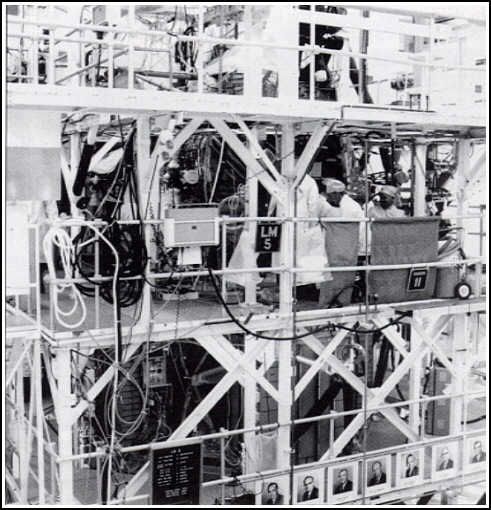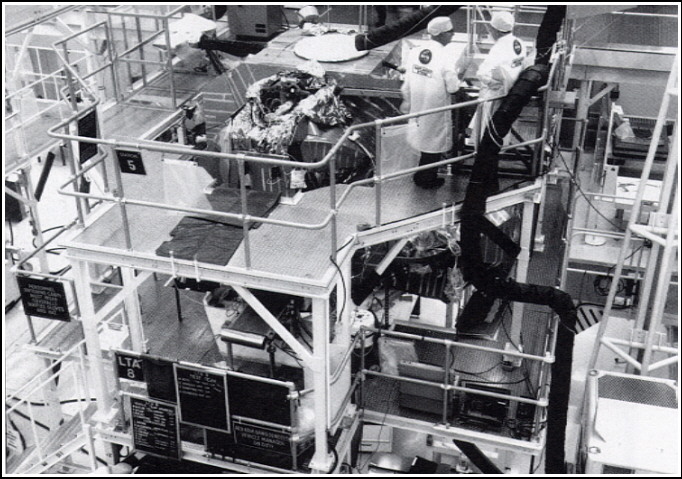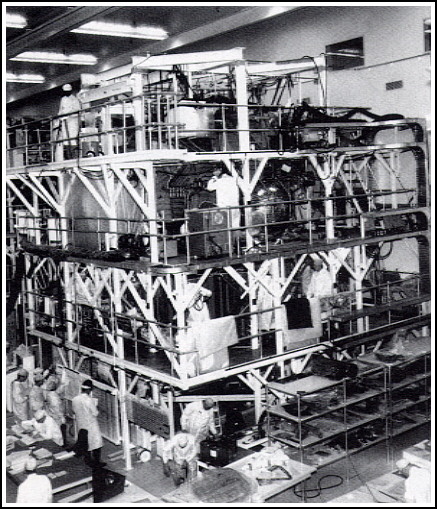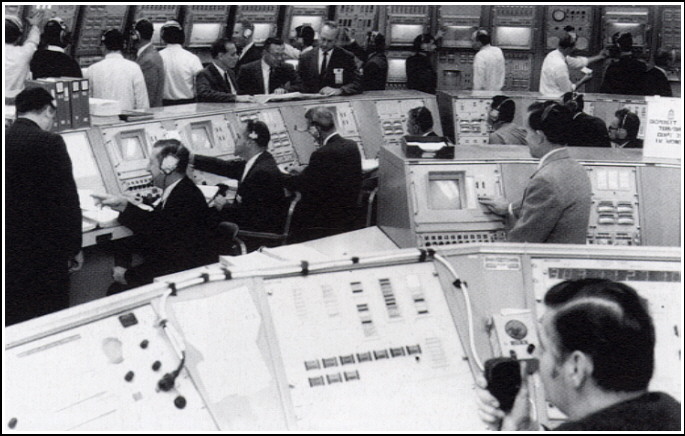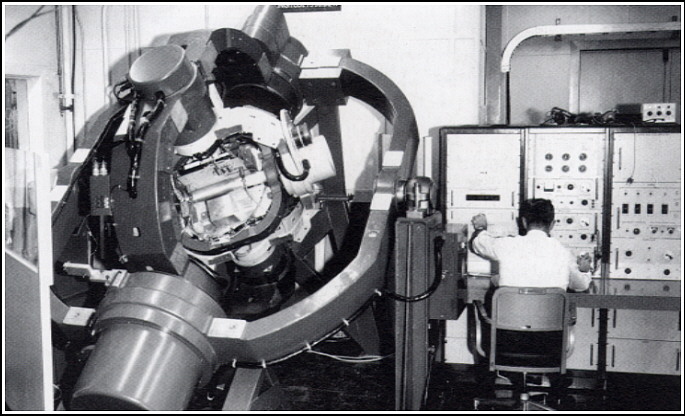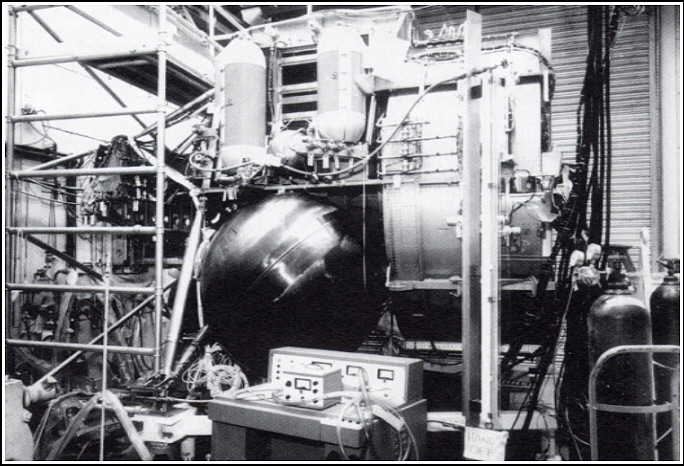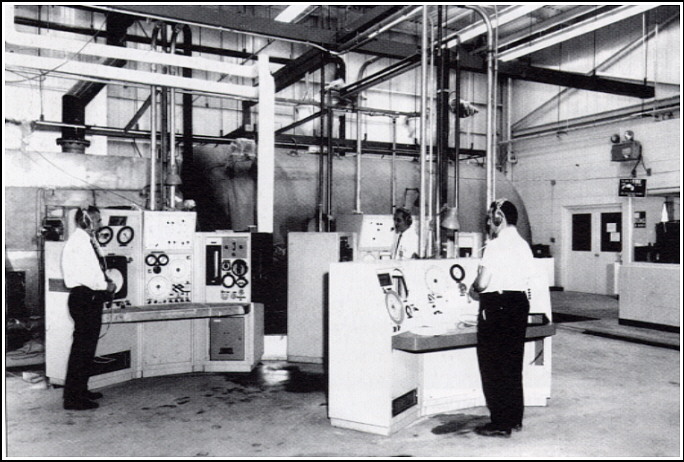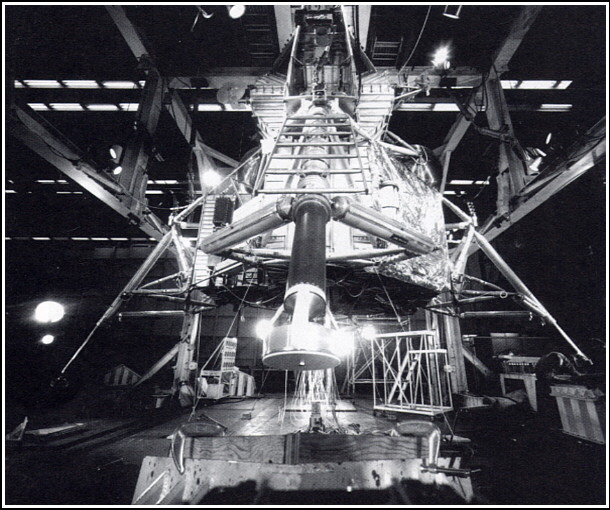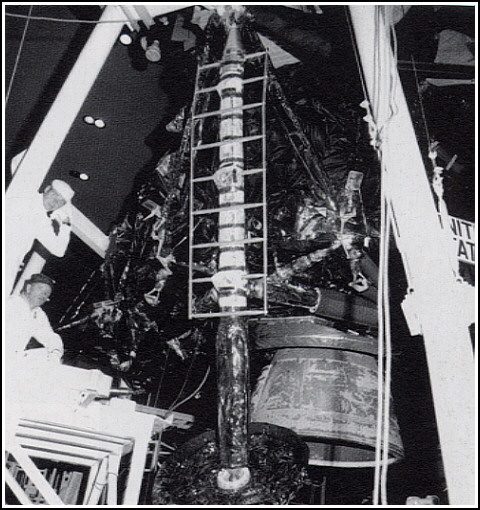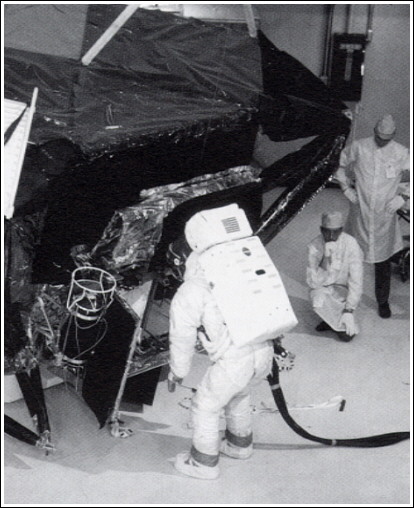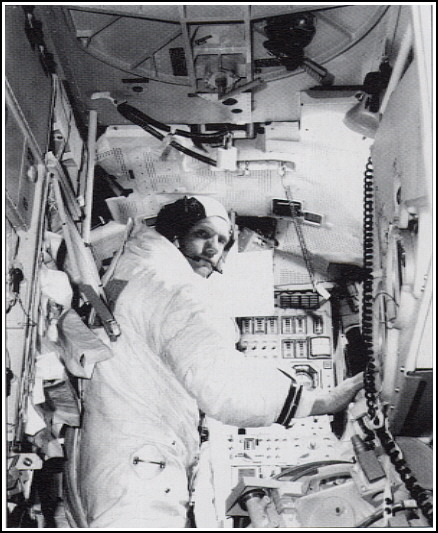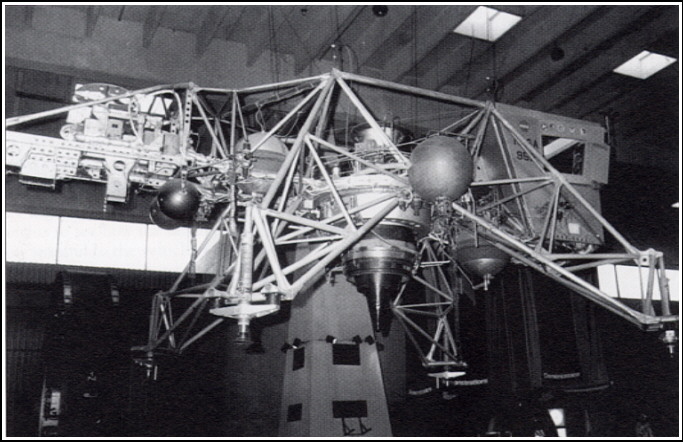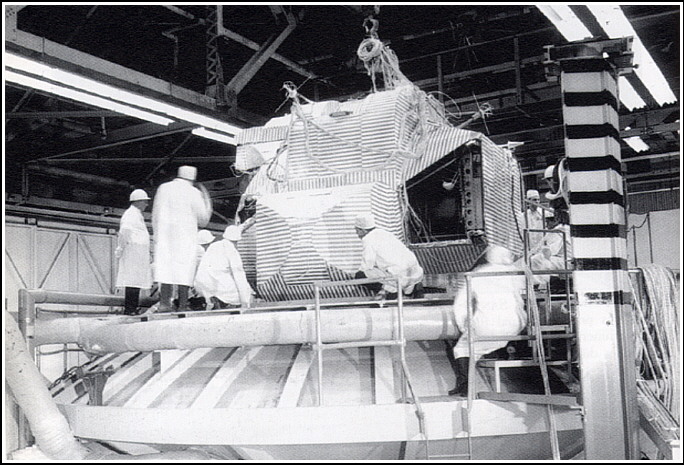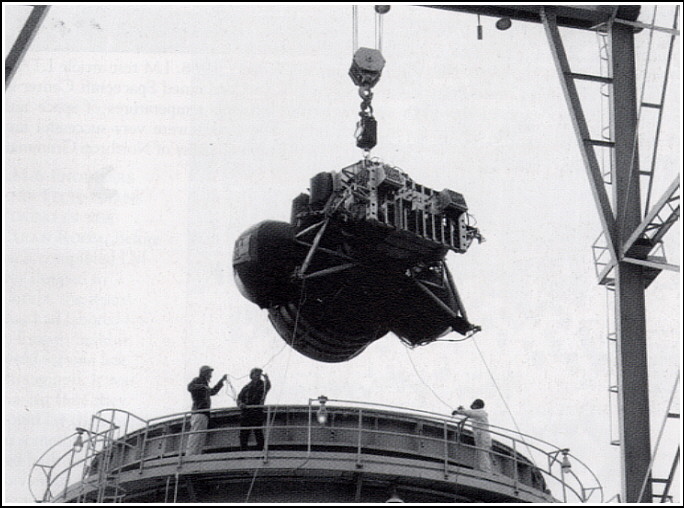
| GRUMMAN'S WHITE SANDS TEST FACILITY,
1966. In order to test the LM's propulsion systems prior to actual flight,
Grumman established a test site with 340 people at the government's White
Sands Test Facility in New Mexico. Test firings using flight-weight test
articles duplicated every phase of the lunar mission, Problems discovered
here allowed the incorporation of improvements prior to the actual launches.
Here, ascent stage test article PA-i is being lowered into the firing chamber. |
|
